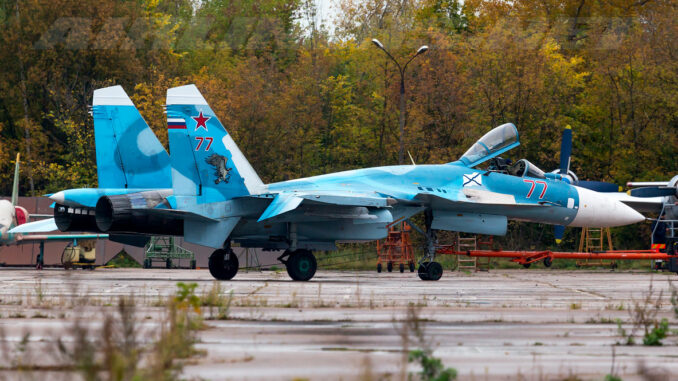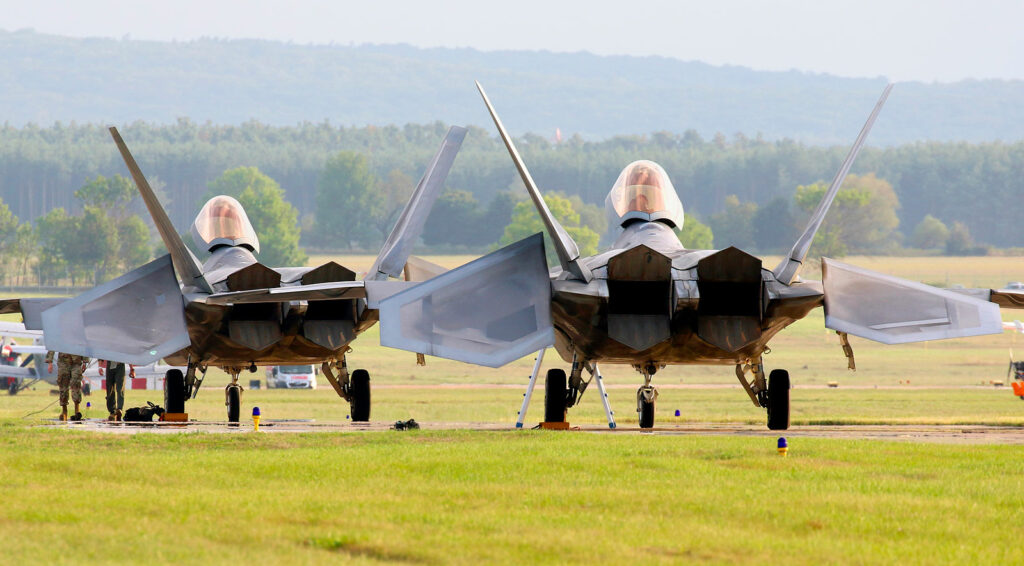
SEAD/DEAD missions aim to neutralize enemy air defenses. Technical and tactical analysis for modern fighter jets.
Modern air warfare requires the rapid neutralization of enemy air defenses. This strategic necessity has given rise to SEAD (Suppression of Enemy Air Defenses) and DEAD (Destruction of Enemy Air Defenses) missions. These operations, carried out by specialized or multi-role fighter aircraft, aim to neutralize or destroy enemy radar systems and surface-to-air batteries. Their success is crucial to establishing temporary or lasting air superiority. With the increased range and accuracy of modern ground-to-air systems, notably the Russian S-400 and Chinese HQ-9 batteries, SEAD/DEAD missions have become more complex and risky. They now require sophisticated technology, rigorous planning, and rapid execution. This article provides a detailed overview of these missions, the equipment required, and the tactics employed by contemporary air forces.
The operational definition of a SEAD/DEAD mission
SEAD missions aim to temporarily neutralize enemy air defenses. The objective is to disrupt or degrade the enemy’s detection and engagement capabilities without requiring the complete destruction of the installations. Conversely, a DEAD mission aims to permanently destroy radars, command centers, and surface-to-air missile launchers. The two approaches can be complementary within the same air campaign.
In practice, a fighter aircraft assigned to a SEAD mission typically carries anti-radiation missiles (ARM) such as the AGM-88 HARM or AGM-88E AARGM. These missiles detect radar emissions and adjust their trajectory to strike the source. For example, the AGM-88E AARGM can reach targets over 150 kilometers away, flying at speeds exceeding Mach 2 (over 2,450 km/h).
DEAD missions often require heavier and more accurate munitions, such as 907-kg GBU-31 JDAM guided bombs. These strikes require aircraft capable of penetrating deep into enemy airspace, sometimes under heavy SAM (Surface-to-Air Missile) threat.
Modern platforms such as the F-35A Lightning II combine SEAD and DEAD capabilities thanks to their stealth, advanced sensors, and ability to carry both anti-radar missiles and guided bombs.
In recent conflicts, such as Operation Allied Force (1999) against Serbia, nearly 38% of NATO sorties were dedicated to SEAD/DEAD missions. This demonstrates the central importance of this type of operation for any successful air campaign.

Equipment and weapons required for SEAD/DEAD missions
The success of a SEAD/DEAD mission depends above all on the equipment and weapons carried by the fighter aircraft. Defenses are suppressed using several types of systems:
- Anti-radiation missiles: The US AGM-88 HARM and Russian Kh-31P detect enemy radar emissions and strike within minutes. The AGM-88E AARGM introduces a GPS mode in case the transmitter is shut down, increasing lethality.
- Electronic jamming: Aircraft such as the EA-18G Growler use ALQ-99 pods to jam enemy radars, reducing their effective range by 70% to 90% depending on their estimated power.
- Precision-guided munitions: JDAM or Paveway bombs can be used to destroy fixed installations. A GBU-31 JDAM, costing around €100,000 per unit, offers accuracy of 13 meters in all weather conditions.
The ESM (Electronic Support Measures) sensor plays a critical role. It identifies, locates, and prioritizes hostile radar emitters in real time. For example, the F-35’s AN/ASQ-239 systems simultaneously detect and geolocate multiple types of radar emissions across a wide frequency band.
The associated costs are high: equipping a SEAD aircraft such as the EA-18G costs around €75 million, not including the estimated operating cost of €20,000 per flight hour.
Active protection is also a key element. Some fighters deploy active decoys (MALD – Miniature Air-Launched Decoy) to saturate or deceive enemy radars before engaging in a real strike.
Tactical planning for a SEAD/DEAD mission
Planning a SEAD/DEAD mission is a complex process that begins with the collection of electromagnetic intelligence (SIGINT). Each radar or surface-to-air battery is characterized by its frequency, mode of operation, mobility, and coupling with other systems.
An electromagnetic map of the theater is then established. For example, against an S-300PMU-2 battery, it is essential to know the effective range of 195 km and the simultaneous tracking capability of 36 targets.
Fighter aircraft assigned to SEAD missions generally operate in pairs or small groups. A typical doctrine is to send jamming fighters ahead to mask the approach, followed by the ARM shooters. In some cases, attack drones such as the MQ-9 Reaper can launch a first salvo to test the defenses.
The firing cycle is fast: as soon as a hostile radar signal is detected, the weapon must be launched in less than 15 seconds to prevent the transmitter from being deactivated.
Coordination is crucial. A SEAD/DEAD mission in a dense theater such as Ukraine today requires perfect synchronization between fighters, satellites, ISR (Intelligence, Surveillance, Reconnaissance) drones, and command centers.
The attrition rate is a key indicator: during Operation Desert Storm (1991), 52% of aircraft shot down were fighters engaged in SEAD missions, highlighting their dangerous nature.

Technical challenges and limitations of modern SEAD/DEAD missions
Contemporary ground-to-air defenses are evolving to reduce vulnerability to SEAD/DEAD missions. Mobile radars such as the S-400’s 96L6E can move every 5 minutes, reducing their exposure to anti-radar strikes.
Integrated (multi-layer) batteries combine short-, medium- and long-range missiles, coupled with multiple radars. This complicates neutralization, as each radar destroyed can be compensated for by another system operating on a different band.
Modern adversaries also use emission management techniques (EMCON): random radar shutdowns, false transmitters, and massive deployment of electronic decoys.
In response, air forces must adapt with:
- The massive use of drone decoys and loitering munitions such as the Switchblade 600 to force the enemy to activate its radars.
- The development of stealth anti-radar missiles such as the AGM-88G AARGM-ER, which can reach distances of 300 km and are designed to evade VHF radars.
- The use of remote jammers, mounted on drones or missiles, to create temporary access corridors.
Despite these efforts, the total suppression of defenses remains illusory in a dense modern theater. The real goal of a SEAD/DEAD mission is to open a limited window of opportunity, allowing bombing waves and air operations to proceed with reduced but never zero risk.
War Wings Daily is an independant magazine.